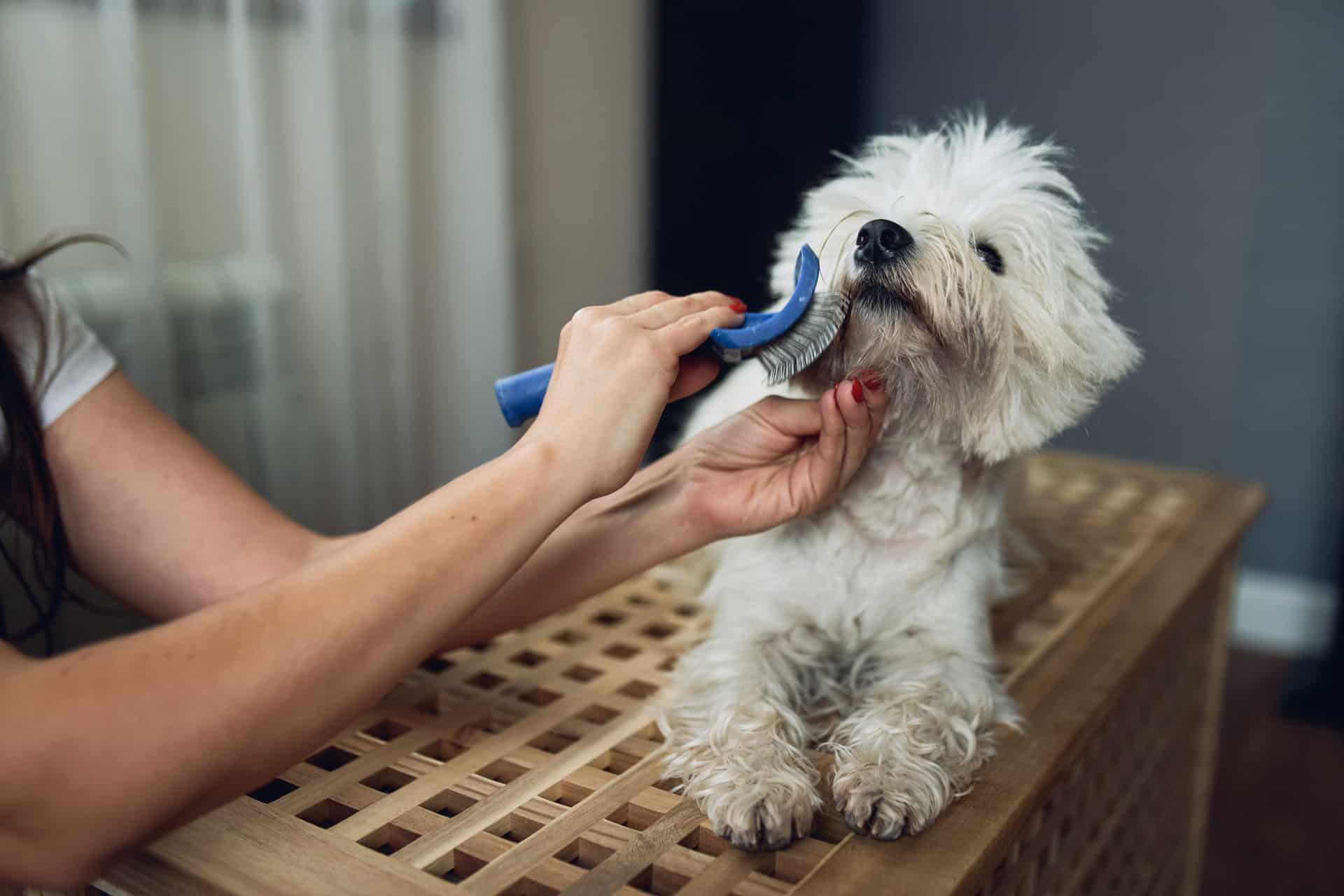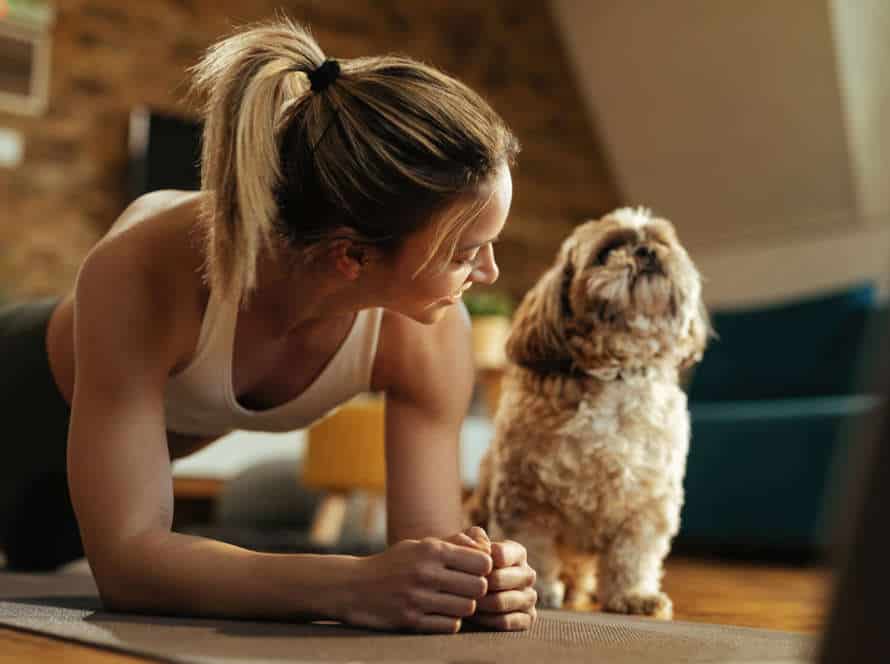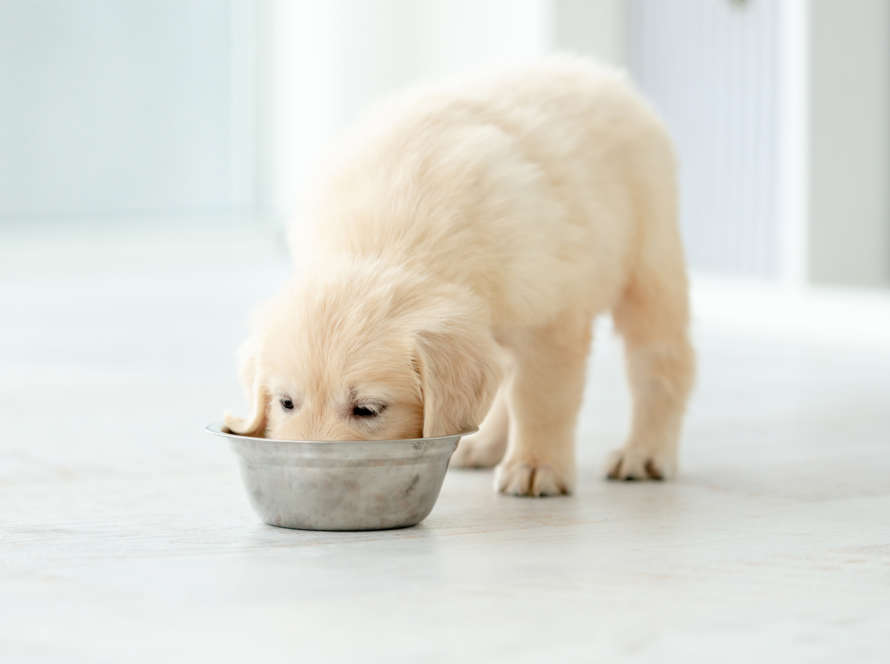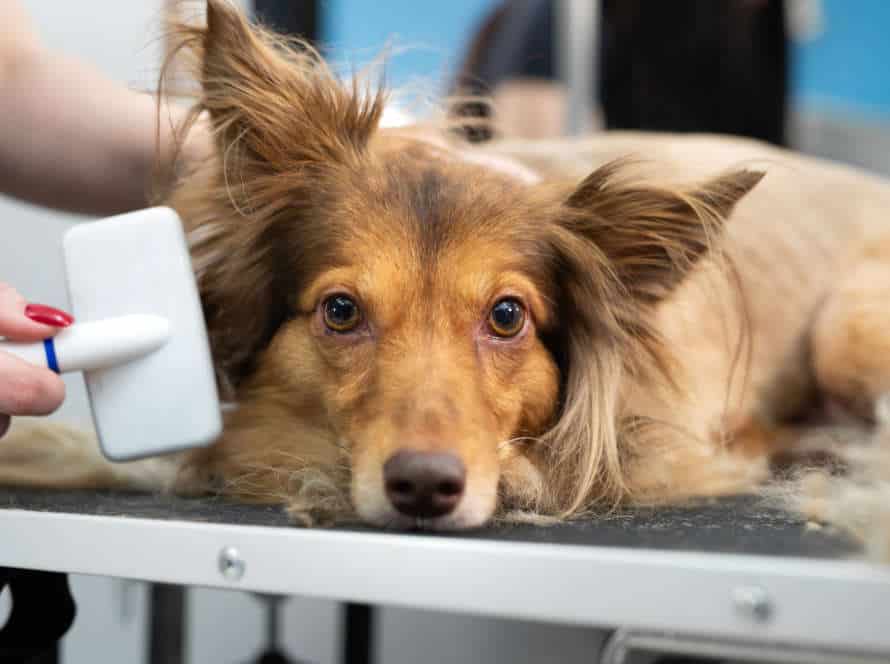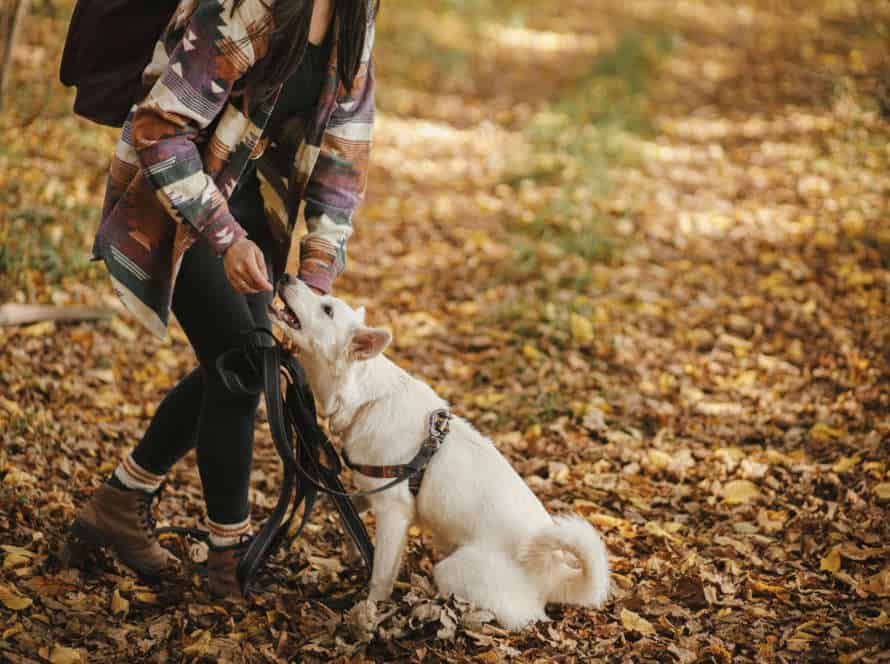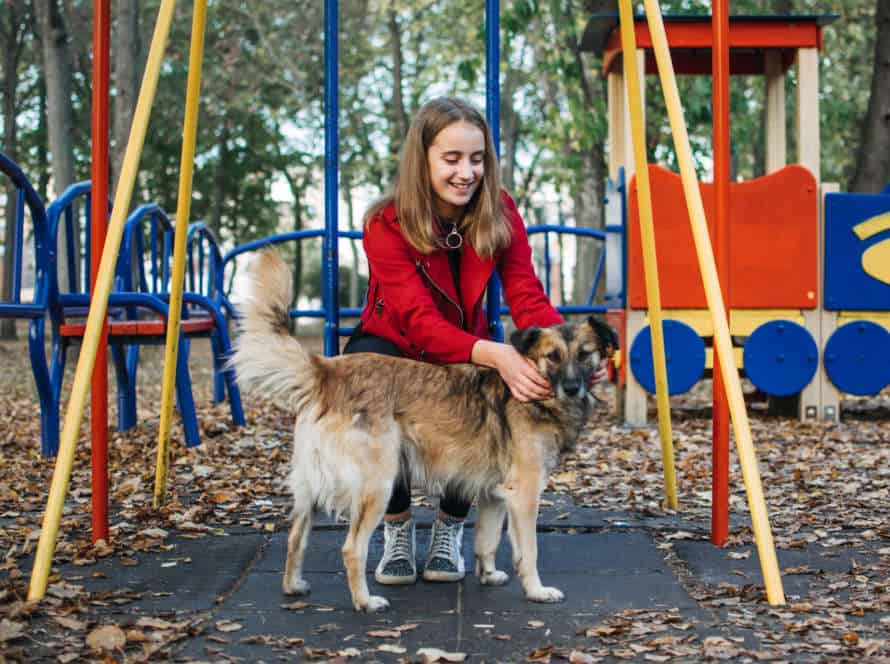Creating the Perfect Puppy Grooming Routine
Creating a grooming routine for your puppy is important for their health, hygiene, and happiness. Here are some tips to help:
- Brush regularly: Loose hair, dirt, and debris can be removed with a soft-bristle brush.
- Bathing: Use a mild shampoo and warm water, but only when needed. Be careful not to get water in their ears. Dry them afterwards.
- Nail Trimming: To prevent discomfort while walking, keep nails trimmed. Be careful not to cut the quick – the pink area inside the nail.
- Teeth Cleaning: Vital for good oral hygiene and to prevent dental problems. Use a toothbrush and toothpaste designed for dogs.
- Make it enjoyable: Use treats and praise to make the experience positive for your pup.
Regular grooming isn’t just about looks – it’s for your pup’s health, too. It can help to spot any abnormalities on the skin/coat and maintain good hygiene.
Understanding Your Puppy’s Coat
Your pup’s coat needs attention the same as the rest of them. Learning the type of coat, its needs, and how to groom it right saves you time, effort and money. Check out the different coat types, grooming techniques and equipment options!
Type of Coat
Grasping your pup’s coat is a must for making a grooming routine that suits their needs.
These are the coat types puppies can have:
- Smooth Coat: Short, flat and glossy fur that lies against their skin. E.g. Beagles or Dobermans. Minimal grooming and light shedding.
- Double Coat: Two layers of fur – a thick undercoat and a longer outer one. For example Huskies and Golden Retrievers. Regular grooming essential, especially during shedding season, to keep mats and tangles away.
- Curly Coat: Tight, woolly curls, from loose waves to tight ringlets. E.g. Poodles and Bichon Frises. Trimming and lots of grooming needed to keep their coat knot-free and well.
- Wire Coat: Coarse and wiry outer coat and soft undercoat. E.g. Terriers and Schnauzers. Brushing, stripping and clipping to maintain their coat’s texture.
- Long Coat: Long hairs, curly, wavy or straight. E.g. Afghan Hounds and Shih Tzus. Daily grooming to maintain tangle-free and mat-free coat.
Know your puppy’s coat and make a grooming routine that keeps their fur glossy and healthy.
Coat Length
Coat length matters for creating the ideal grooming routine for puppies! Short coats (Beagles, Boxers, Dalmatians) need regular brushing once a week with a bristle brush. Medium coats (Australian Shepherds, Golden Retrievers, Siberian Huskies) require moderate grooming. Brush every other day with a slicker brush to remove loose fur and avoid matting. Long coats (Afghan Hounds, Maltese, Shih Tzus) require daily brushing, monthly baths, and trimming to avoid matting and tangling. Pro Tip – Know your pup’s coat length to select the right tools and products. This will keep your pup healthy, happy, and well-groomed!
Coat Color
Puppies come in many colors! Each color provides info on the breed, and the grooming routine they need. Here’s some of the popular colors and breeds:
- Black: Labs, German Shepherds, and Poodles. Groom these breeds regularly, including brushing and trimming.
- Brown: Golden Retrievers, Beagles, and Dachshunds. Brush these breeds often to stop mats and tangles.
- White: Samoyeds, Bichon Frises, and West Highland Terriers. Keep these coats bright with frequent baths and grooming.
- Gray: Weimaraners, Great Danes, and Greyhounds. Brush and shampoo these coats weekly for dirt and oil removal.
- Tan: Chihuahuas, Boxers, and Doberman Pinschers. Brush and bathe these coats for skin protection.
Essential Grooming Tools
Groom your pup perfectly! Get the right tools. Toothbrushes, combs, nail clippers, dog shampoo – you need these to keep your pup looking, feeling and smelling clean. Essential tools: get them for a great job!
Brushes
Brushes are an absolute must for any pup parent’s grooming routine. Check out the benefits of these popular dog brushes:
- Bristle Brush: Great for removing fur, dirt, and debris from short to medium-length coats.
- Slicker Brush: Perfect for detangling mats and tangles from long and curly hair.
- Pin Brush: Nice and gentle for untangling long fur.
- Undercoat rake: Perfect for double-coated breeds to remove dead fur from the undercoat.
With these tools, your pup will always be groomed and happy. Pro tip: Always brush in the direction of hair growth and start with soft strokes to avoid hurting your pup.
Combs
Combs are essential for keeping your pup groomed. The right kind of comb can make a huge difference to your dog’s look and wellbeing. Here’s a list of some combs and their uses:
- Slicker comb: Fine, short wires close together. Ideal for removing mats and tangles in long-haired dogs.
- Flea comb: Fine teeth. Removes fleas, flea eggs and small debris from fur.
- Dematting comb: Long, sharp teeth. Used to remove mats and tangles in long-haired dogs.
- Undercoat rake: Long, widely spaced teeth. Perfect for getting rid of loose fur and undercoat.
Combs help prevent matting and skin irritation. Regular use gives your pup a healthy, shiny coat. For the best results, comb your pup regularly and choose the right comb for their breed and coat type.
Nail Trimmers
Nail trimmers are a must-have for your pup’s grooming routine! Trimming nails often keeps them from overgrowing, splitting, or breaking.
Two types of nail trimmers exist: guillotine and scissor. Guillotine is better for smaller dogs, while scissor is best for larger breeds.
Tips for using trimmers:
- Find a well-lit area.
- Have styptic powder handy.
- Hold pup’s paw securely.
- Clip each nail quickly and smoothly.
- Avoid the quick (pink part with nerves/blood vessels).
- If you cut the quick, apply styptic powder.
- Reward pup after each session to make it stress-free.
Bathing Your Puppy
Bathtime is essential for puppy grooming. It keeps the pup’s coat clean and parasite-free. You need to know the right steps to take when bathing a pup. The type of shampoo, how often to bathe, and the proper way to dry them off – these are all important aspects.
The following are the steps to take when bathing a pup:
- Prepare the bathing area. Use a non-slip surface such as a rubber mat to avoid accidents.
- Wet the pup. Use warm water to wet them from the neck down.
- Apply shampoo. Use a puppy-specific shampoo and lather them up, avoiding their eyes and ears.
- Rinse the pup thoroughly with warm water, making sure there is no shampoo left on their coat.
- Dry the pup using a towel, making sure to gently dry their ears and paws.
- Brush the pup’s coat to prevent any tangles.
The type of shampoo, how often to bathe, and the proper way to dry them off should also be taken into consideration when bathing your pup.
Choosing the Right Shampoo
Choosing the perfect shampoo for your pup is essential for keeping their coat healthy and clean. Here’s how to pick the right one:
- Check for allergies. Look for shampoos without harsh chemicals or fragrances that could cause skin irritation. If your dog has allergies, go for a hypoallergenic shampoo with natural ingredients.
- Take into account their coat type. Some shampoos are designed for certain coat types, such as curly, long, or double-coated breeds.
- Don’t use human shampoo. It’s not safe for dogs as it strips their coat of natural oils and disrupts their skin’s pH balance.
- Ask your vet. They can give you recommendations based on your pup’s individual needs.
Pro tip: After bath time, dry your pup’s coat properly with a towel or dryer. This helps prevent skin irritation and dampness.
Bathing Frequency
Determining your pup’s bath frequency depends on their breed, coat type and lifestyle. Generally, bath them every 2-3 months as bathing too often can dry out their skin and fur. But, if they like to get muddy or have skin problems, you’ll need more frequent baths. Here are a few tips to make it a positive experience:
- Choose a special puppy shampoo that’s gentle and designed for their sensitive skin.
- Prepare towels, washcloths and a non-slip mat before you start.
- Use lukewarm water and avoid getting it in their eyes, ears and nose.
- Rinse thoroughly to remove all the shampoo as residue can cause irritation.
- Towel dry them off and give them lots of love and treats for a job well done!
Bonus tip: Brush out tangles in their coat before bathing for an easier grooming session.
Drying Your Puppy
Drying your puppy’s fur post-bath is essential for keeping them healthy and clean. Gather up some towels, a blow dryer, and some dog-friendly grooming products. Then:
- Use a towel to soak up excess water.
- With a second towel, rub the fur in the direction of growth.
- If your puppy is okay with it, use a dog-specific blow dryer. Keep it at least 1 foot away and move it around.
- As you dry, spray or condition to detangle knots.
Remember to also create grooming routine of shampoo, ear cleaning, and nail trimming.
Pro tip: Human hair dryers can be too hot, leading to burns and skin dryness. Use a dog-specific one.
Brushing and Combing Your Puppy’s Coat
Grooming your pup? It’s important! Brushing and combing their coat regularly is key. It aids in keeping their coat healthy and shiny. Plus, less shedding and fewer skin issues. Here’s a look at the benefits of brushing and combing, plus how to create a puppy grooming routine.
Brushing a Short-Haired Coat
Brushing your pup’s short-haired coat regularly is a must! It keeps their coat healthy, glossy and knot-free. Here’s the best way to do it:
- Pick a brush with soft bristles so it won’t hurt your pup’s skin.
- Start at their head and brush down to the tail in the direction of their hair growth.
- Use gentle, consistent strokes, covering all of their fur – chest, legs, belly and more.
- Pay extra attention to parts where tangles and matting happen most, such as behind the ears and under the armpits.
- As you brush, check for any skin irritation like redness or flakiness.
This routine not only helps their coat, but also strengthens your bond with them!
Brushing a Medium-Length Coat
Brushing your pup’s medium-length coat is an important grooming task. To keep their coat and skin healthy, here are the steps to follow:
- Detangle any knots or mats in the fur with a slicker brush or comb.
- Use a bristle brush to remove any loose fur or debris from the fur. Start at the head and work downwards.
- Pay special attention to the ears, legs, and belly. These areas are more prone to matting.
- With a metal comb, check for any knots that the brush may have missed.
- Give your pup treats and positive reinforcement during the grooming process to make the experience more pleasant.
By following these steps your pup will have a healthy, shiny, and mat-free coat.
Brushing a Long-Haired Coat
Brushing your pup’s long-haired coat is a must for a perfect grooming routine. Here are some tips to help:
- Start by detangling knots/mats with fingers/comb. This will make brushing easier.
- Use a slicker or pin brush, depending on the length/thickness of fur. Work from bottom up.
- Hold fur in one hand, brush against direction of hair growth. Be gentle but firm. Don’t forget belly, legs, tail, and ears.
- Reward pup with treats/praise/cuddles when done. A regular brushing routine keeps coat clean, healthy, shiny, and mat-free.
Trimming Your Puppy’s Nails
Trimming your pup’s nails is an essential part of grooming. It can stop foot injuries and keep their nails healthy and short. To do this, you may use several instruments and techniques. It’s vital to be careful and systematic. This piece will explain the most suitable way to trim your puppy’s nails and maintain their health.
Choosing the Right Nail Trimmer
Choosing the right nail trimmer for your puppy can make trimming their nails easier and less stressful. Consider these options:
- Guillotine Trimmers: A miniature guillotine, with a hole to place the nail through and a blade that slices it off. Best for smaller dogs and puppies since they’re less intimidating.
- Scissor Trimmers: Like regular scissors, but with a curved or angled blade. Useful for large dogs. Large or small.
- Grinder Trimmers: A rotating sanding drum to wear the nail away gradually. Safer since no risk of cutting the quick. Might be noisier and take longer.
Picking the right trimmer and incorporating it into your puppy’s routine will make nail trims go smoothly. For both you and your furry companion!
Cutting the Nail
Trimming your pup’s nails is a must in their grooming routine. Here are a few steps to make it easier and successful:
- Gather the stuff you need: Get sharp nail clippers, styptic powder, and treats for your pup.
- Get your pup comfy with paw and nail touching: Start by holding and touching your pup’s paws regularly.
- Spot the quick of the nail: The quick is the pink part which has blood vessels and nerves. Make sure to avoid cutting it when clipping your pup’s nails.
- Make the cut: Securely hold your pup’s paw and cut the tip of the nail. Use the styptic powder if there is any bleeding.
- Reward your pup: Give treats and praises after clipping each nail. This will help them associate it with something positive.
- Repeat every 2-4 weeks, depending on the nail growth.
Pro tip: If you’re not sure about trimming your pup’s nails, don’t hesitate to ask a professional groomer or vet for help.
Dealing with Accidents
When grooming your pup, accidents can happen while trimming nails. This can be painful if the quick is cut and cause bleeding. Here’s what to do:
- Stay calm and reassure your pup with a gentle voice and petting.
- Apply a small amount of styptic powder to the cut area. If you don’t have any, you can use cornstarch or flour as a substitute.
- Hold a clean cloth or tissue against the area for a few mins until the bleeding stops.
- If the bleeding continues more than 15 mins or is excessive, contact your vet for advice.
- Take your time and be gentle when trimming. Offer treats and positive reinforcement for a pleasant experience.
Cleaning Your Puppy’s Eyes and Ears
Grooming your puppy? Don’t forget the eyes and ears! Cleaning them is essential for your pet’s health. You’ll need the right tools. Here’s a step-by-step guide. Get ready to clean and keep your pup healthy and free of any harmful dirt and bacteria.
- Gather supplies: You’ll need cotton balls or pads, ear cleaning solution, and eye cleaning solution specifically designed for dogs.
- Prepare your pup: Before cleaning, make sure your puppy is calm and relaxed, and in a secure place.
- Clean your pup’s eyes: Dampen a cotton ball or pad with the eye cleaning solution and gently wipe from the corner of the eye outward. Repeat with a clean cotton ball or pad until no more dirt or debris is visible.
- Clean your pup’s ears: Saturate a cotton ball with ear cleaning solution, gently lift the ear flap, and wipe the inside of the ear. Repeat with a clean cotton ball until no more dirt or debris is visible.
Cleaning the Eyes
Cleaning your puppy’s eyes is essential for its wellbeing. It stops microorganisms and junk getting in, keeping your pup safe and comfy. Here’s how:
- Use a clean, wet cotton ball or soft cloth.
- Gently wipe outward from the corner of the eye towards the face edge.
- Don’t let water or soap get into your pup’s eyes.
- Dry the area with a soft towel.
Do this 5-minute routine regularly to keep your pup healthy.
Cleaning the Ears
Cleaning your pup’s ears is an absolute must for their health and hygiene. Here’s how:
- Check for redness, discharge, or odor.
- Wipe the outer ear and flap with a damp and soft cloth or cotton ball.
- Squeeze a few drops of canine ear cleaning solution into the ear canal. Gently massage for 20-30 seconds.
- Let pup shake their head to remove remaining debris or liquid.
- Wipe away with a clean cotton ball or cloth.
Note: Cleaning too often or aggressively can cause irritation or infection. Ask your vet if unsure or if pup has unusual ear symptoms.
Pro tip: Clean pup’s ears once or twice a month, or as recommended by vet.
Grooming Made Easy with Positive Reinforcement
Grooming your pup at home can be overwhelming! But, it doesn’t have to be. With some simple steps and a bit of positive reinforcement, your pup will soon enjoy being groomed. Show your pup that grooming is fun and stress-free. Here’s how you can do it!
Introducing Your Puppy to Grooming Tools
Introducing your pup to grooming tools is a must! You can make this process stress-free and positive. Here are some helpful tips:
- Slowly let your pup smell and explore each tool.
- Reward good behaviour with treats and praise.
- Start with a soft-bristle brush or comb.
- Gradually move up to more complex items like nail clippers and electric clippers.
- Keep it short and frequent – make sure your pup is comfy!
By following these steps, you can create a great grooming routine which will benefit your pup’s health.
Positive Reinforcement During Grooming Sessions
Positive reinforcement during grooming is the key to a stress-free and pleasant experience for both you and your pup. Here are some tips:
- Treats: Give small, healthy treats when your pup remains calm and still or shows good behaviour.
- Verbal Praise: Use a happy, enthusiastic tone to let your pup know you’re pleased.
- Touch: Dogs love physical touch and affection. Use gentle strokes while praising them.
- Toy: Give your pup their favorite toy as a reward for good behaviour during grooming.
Making Grooming a Positive Experience for Your Puppy
Regularly grooming your pup is essential for their health and happiness. But, without positive reinforcement, it can be a stressful event for both you and your pup. Here’s how to make the routine more enjoyable:
- Start young. Introduce your puppy to grooming as soon as possible.
- Keep it short. Begin with brief sessions and increase as your pup gets more used to it.
- Treats! Positive reinforcement is key. Give treats and compliments during and after every grooming session.
- Be gentle. Use gentle touches to help them relax.
- Choose the right tools. Use ones made for puppies, so they won’t feel any pain.
Try these tips for making grooming a positive and fun experience for your furry friend.
Frequently Asked Questions
1. How often should I groom my puppy?
It is recommended to groom your puppy at least once a week, but the grooming frequency will depend on the breed and coat type of your puppy. If your puppy has a longer coat, you may need to groom them more frequently.
2. What tools will I need for puppy grooming?
You will need a slicker brush, a dematting comb, a nail clipper, and shampoo specifically formulated for puppies. Depending on the breed, you may also need specific grooming tools such as thinning shears or an undercoat rake.
3. Can I groom my puppy at home or should I take them to a professional groomer?
You can certainly groom your puppy at home, but if you are unsure of how to properly groom your puppy or have a difficult time handling them during grooming, it may be best to take them to a professional groomer.
4. What should I do if my puppy has mats in their fur?
You should use a dematting comb to carefully detangle the mats. Do not attempt to cut the mats out with scissors as this can be dangerous and lead to injury.
5. How should I bathe my puppy?
First, brush your puppy to remove any tangles and mats. Wet your puppy thoroughly, avoiding getting water in their ears. Apply puppy shampoo and work it into a lather, being careful not to get shampoo in their eyes or mouth. Rinse your puppy thoroughly and towel dry.
6. How can I make grooming a positive experience for my puppy?
Start by introducing your puppy to grooming gradually, letting them smell and explore the grooming tools before using them. Reward your puppy with plenty of praise and treats during and after grooming sessions. Try to keep the grooming experience as calm and positive as possible, avoiding any harsh or abrupt movements or actions.

